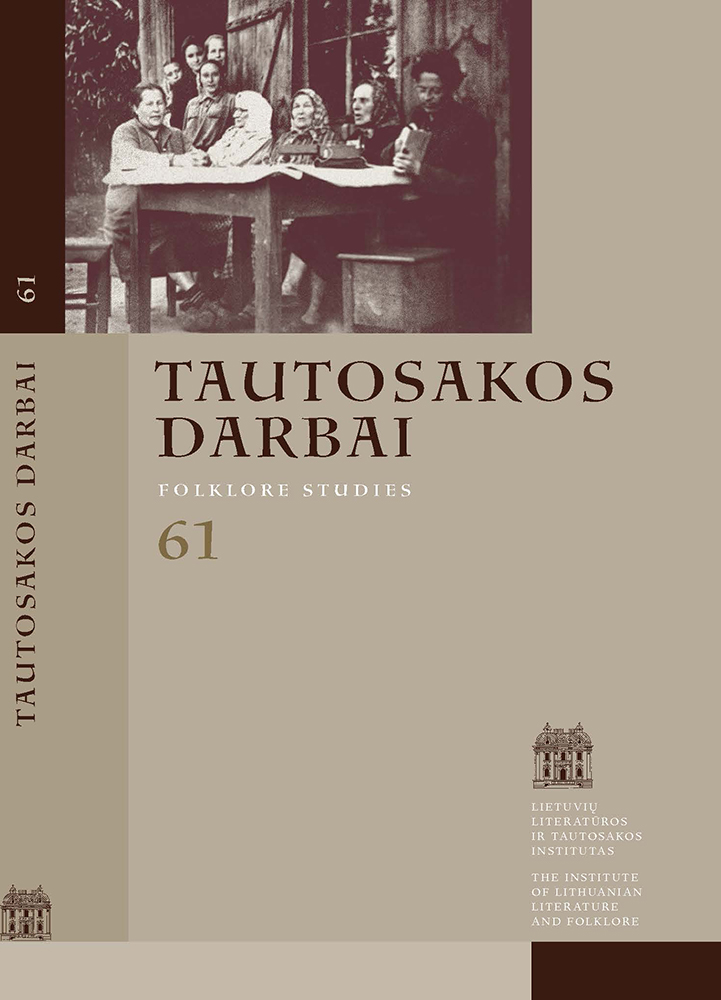Lietuvių mįslės apie puodą – žmogaus gyvenimo alegorijos
Santrauka
Tęsiant anksčiau pradėtą nagrinėti gana plačiai paplitusį tarptautinį reiškinį – vadinamąją kančių seriją mįslėse – šiame straipsnyje tiriamos lietuvių mįslės apie puodą „Kai jaunas buvau, aukso krėsle sėdėjau, kai pasenau, nė šuo kaulų neėda“ ir „Nulipdė mane kaip Adomą iš molio, degino krosny kaip tris jaunuolius Babilone. Pardavė mane kaip broliai Juozapą į Egiptą. Važinėju aš kaip Elijas ugniniais ratais. Iš mano vidurių visa šeima valgo, o kai aš numirštu, mano kaulus per tvorą išmeta (nepakavoja)“. Pasitelkus visus jų variantus (skelbtus ir esančius rankraščiuose) mįslės lyginamos viena su kita, su tarptautiniais atitikmenimis, kitų žanrų tekstais, atskleidžiama galima mįslių motyvų kilmė, reikšmė ir šių mįslių paskirtis – alegoriškai kalbėti apie žmogaus būties nepastovumą.
Atsisiuntimai
Skaitomiausi šio autoriaus(ų) straipsniai
- Aelita Kensminienė, Šiuolaikinė mįslių vartosena Lietuvoje , Tautosakos darbai: T 64 (2022)
- Aelita Kensminienė, Mįslė apie kalbančią plunksną: motyvų klajonės , Tautosakos darbai: T 58 (2019)
- Aelita Kensminienė, Mįslės apie raštą, jungiamos lauko vaizdavimo , Tautosakos darbai: T 50 (2015)
- Aelita Kensminienė, Mįslių suvokimo raida: nuo refleksijos tradicinėse mįslėse iki termino metaforinio išskydimo masinėse žiniasklaidos priemonėse , Tautosakos darbai: T 54 (2017)
